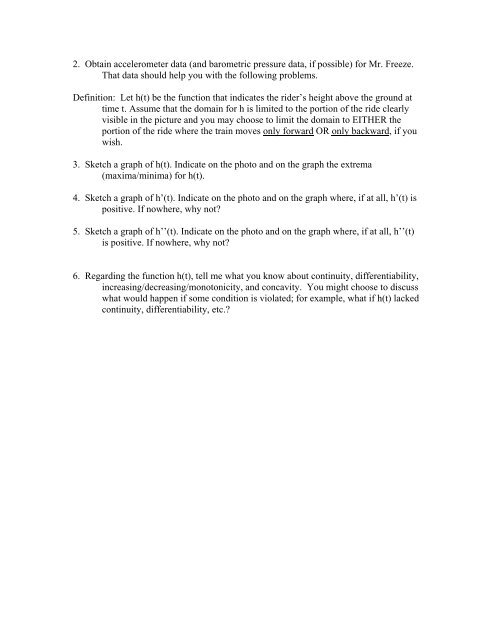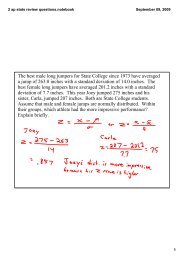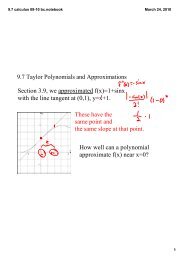Methods of Indirect Measurement Common angle method using ...
Methods of Indirect Measurement Common angle method using ...
Methods of Indirect Measurement Common angle method using ...
You also want an ePaper? Increase the reach of your titles
YUMPU automatically turns print PDFs into web optimized ePapers that Google loves.
2. Obtain accelerometer data (and barometric pressure data, if possible) for Mr. Freeze.<br />
That data should help you with the following problems.<br />
Definition: Let h(t) be the function that indicates the rider’s height above the ground at<br />
time t. Assume that the domain for h is limited to the portion <strong>of</strong> the ride clearly<br />
visible in the picture and you may choose to limit the domain to EITHER the<br />
portion <strong>of</strong> the ride where the train moves only forward OR only backward, if you<br />
wish.<br />
3. Sketch a graph <strong>of</strong> h(t). Indicate on the photo and on the graph the extrema<br />
(maxima/minima) for h(t).<br />
4. Sketch a graph <strong>of</strong> h’(t). Indicate on the photo and on the graph where, if at all, h’(t) is<br />
positive. If nowhere, why not?<br />
5. Sketch a graph <strong>of</strong> h’’(t). Indicate on the photo and on the graph where, if at all, h’’(t)<br />
is positive. If nowhere, why not?<br />
6. Regarding the function h(t), tell me what you know about continuity, differentiability,<br />
increasing/decreasing/monotonicity, and concavity. You might choose to discuss<br />
what would happen if some condition is violated; for example, what if h(t) lacked<br />
continuity, differentiability, etc.?






